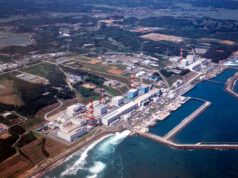ESCAP keeps Philippine GDP growth projections
THE UNITED NATIONS’ (UN) regional development arm maintained its economic growth forecast for the Philippines this year, amid a stable outlook for the Asia-Pacific region.
In its Economic and Social Survey of Asia and the Pacific 2018 report, the UN Economic and Social Commission for Asia and the Pacific (ESCAP) said it expects the Philippine economy to grow 6.8% this year, steady from its December report. It also forecasts the economy to grow by 6.9% in 2019.
This would be faster than the 6.7% gross domestic product (GDP) growth recorded in 2017, but below the government’s 7-8% target for 2018 until 2022. The World Bank and International Monetary Fund see lower 6.7% GDP growth for the Philippines this year, with the former forecasting it to grow the same pace in 2019.
ESCAP’s Philippine economic growth forecast would also be above Southeast Asia’s average of 5.1% and 5.2% for 2018 and 2019, respectively, as well as developing Asia-Pacific’s 5.5% forecast for both years.
“The outlook for economic growth in the Asia-Pacific region in 2018 and 2019 is looking broadly stable. Improved global economic prospects, a broad-based pickup in exports and robust domestic consumption support this positive economic outlook. Developing Asia-Pacific economies are projected to grow by 5.5% in both 2018 and 2019, with a slight moderation in China offset by a recovery in India and steady performance in the rest of the region,” the report read.
Among Southeast Asian countries, Myanmar is seen to grow at the fastest clip — 7.2% this year and 7.4% in 2019, followed by Cambodia — 6.9% this year and 6.8% in 2019.
ESCAP sees China’s economy growing by 6.6% this year and 6.4% in 2019, and India’s economy growing by 7.2% this year and 7.4% in 2019.
However, ESCAP flagged several risks facing the region, such as “growing financial vulnerability and rising private and corporate debt, particularly in China and countries in South-East Asia, falling or low reserves in a few South Asian economies and uncertainty concerning trends in commodity prices.”
“Our policy simulation for 18 countries suggests that a $10 rise in the price of oil per barrel would dampen GDP growth by 0.14 — 0.4 percentage points, widen external current account deficits by 0.5 -1.0 percentage points and build inflationary pressures in oil-importing economies. Oil exporters, however, would see a positive impact,” the report read.
Despite a rebound in trade last year, ESCAP also flagged rising trade protectionism, saying this remains a “threat to global economic stabilization.”
“Uncertainty and more trade protectionism may negatively affect some of the region’s traditional strengths, such as open export-oriented markets,” the report read. — Elijah Joseph C. Tubayan



